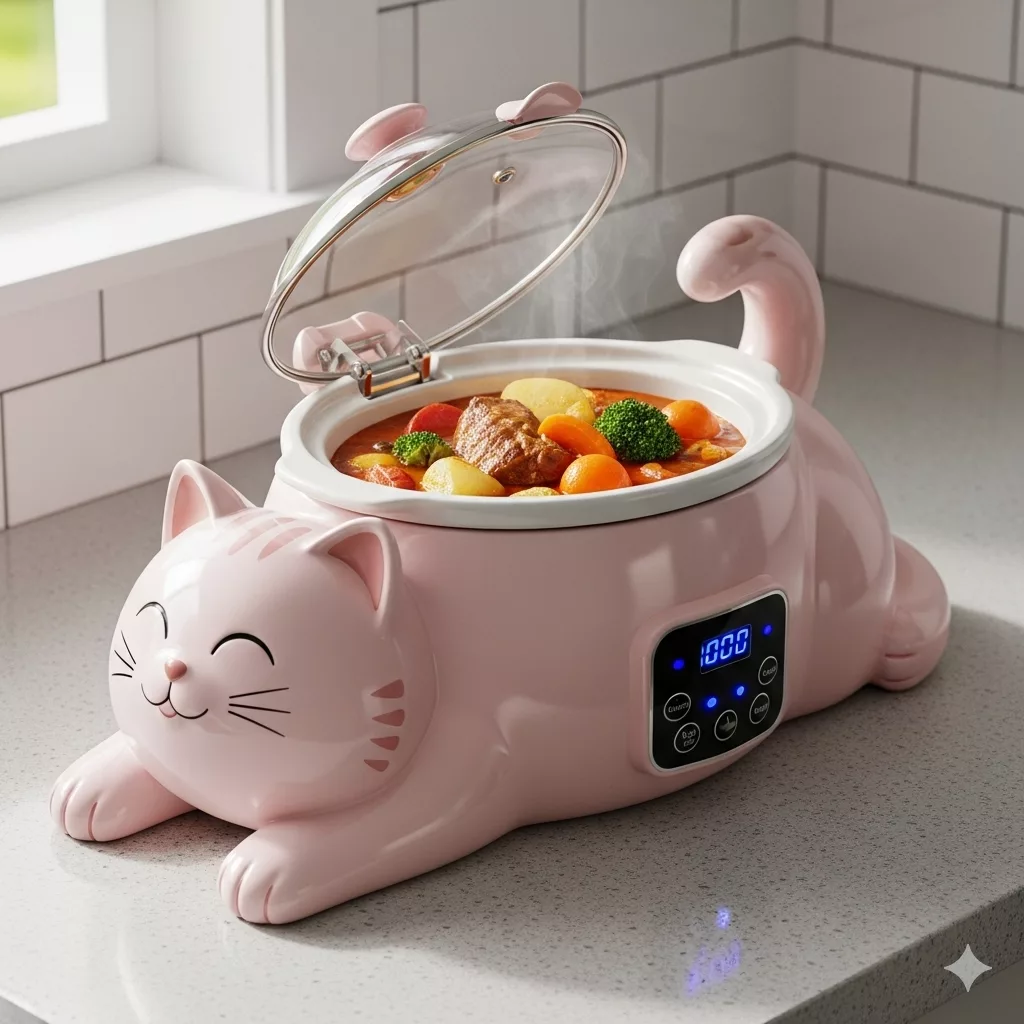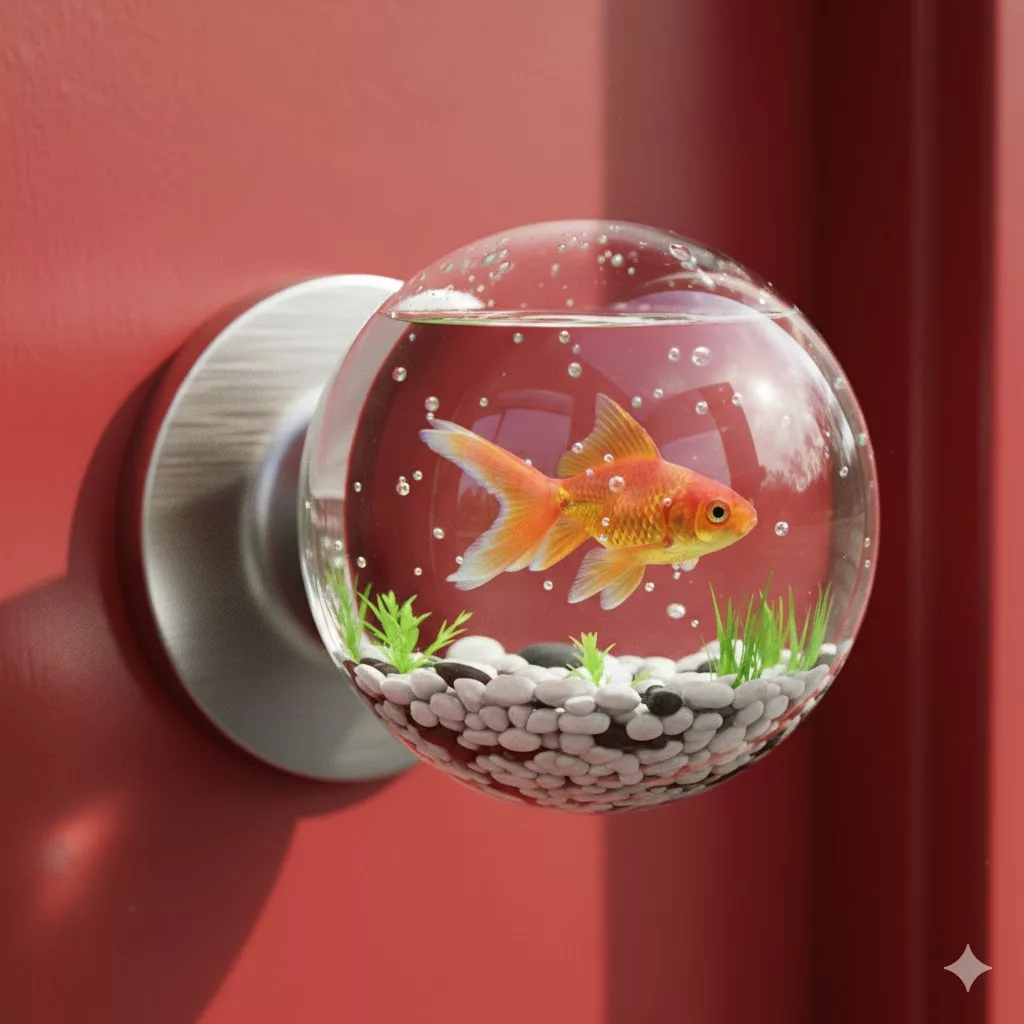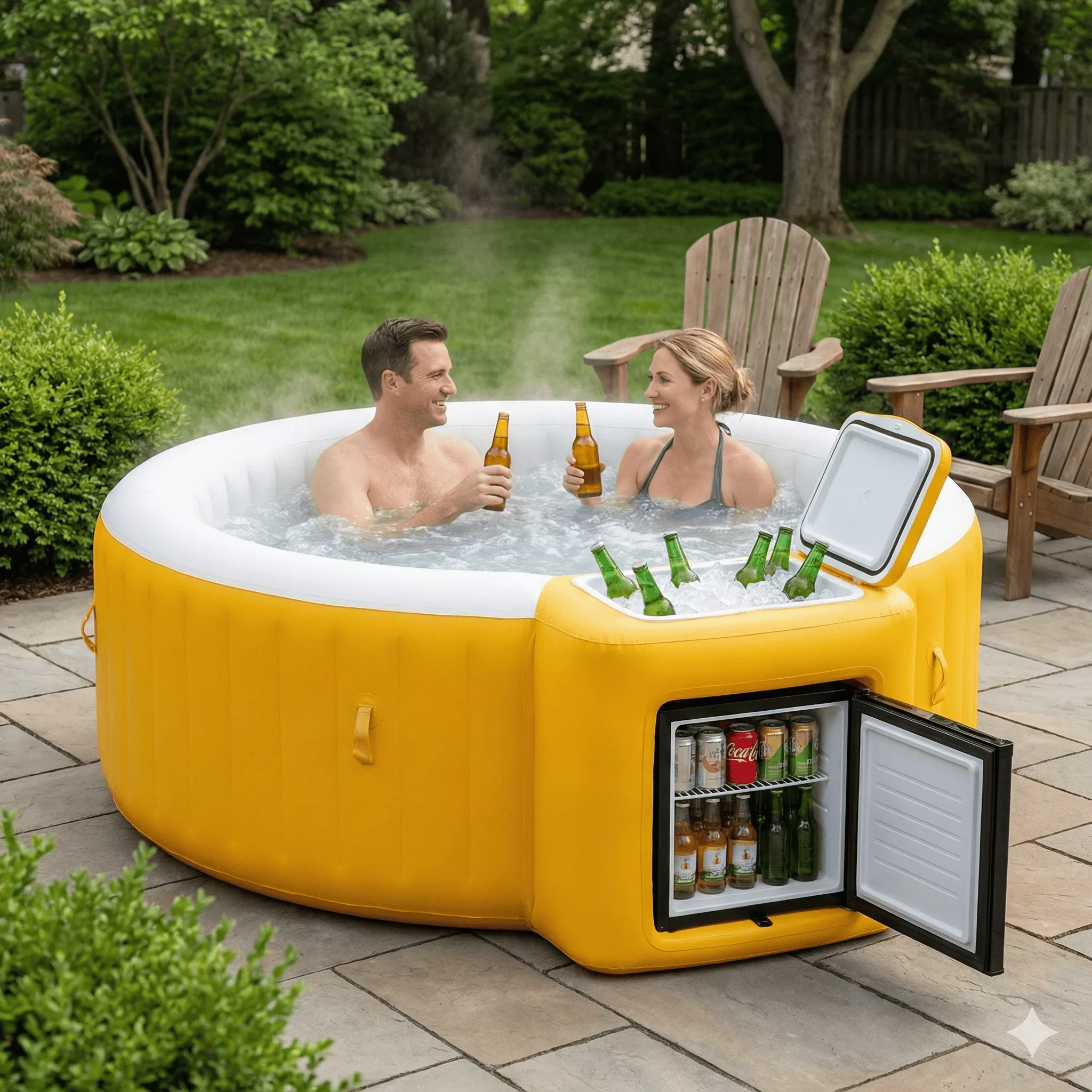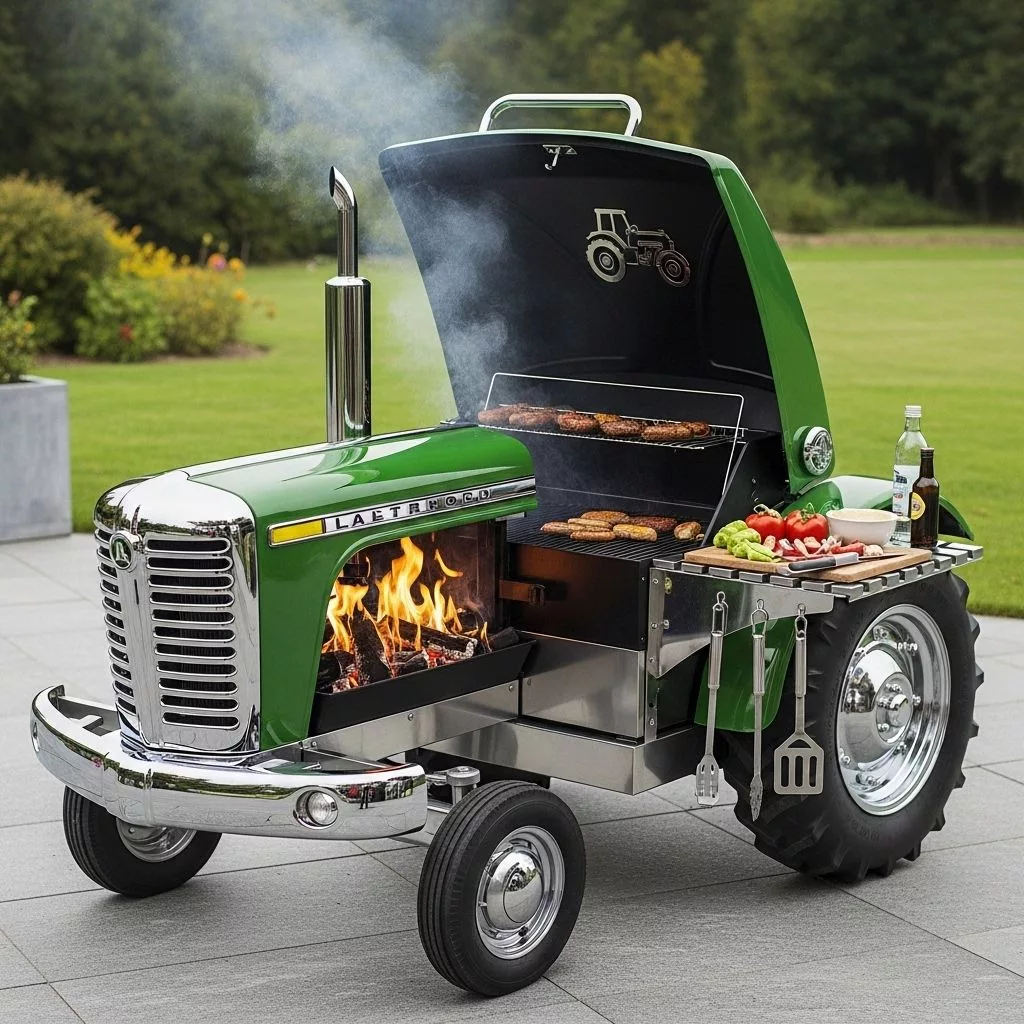
A cat slow cooker is a specialized kitchen appliance designed specifically for preparing nutritious, homemade meals for your feline companions using gentle, low-temperature cooking methods that preserve essential nutrients while creating delicious, easily digestible food. These innovative devices allow pet owners to take complete control over their cat’s nutrition by preparing fresh, wholesome meals that rival or exceed the quality of premium commercial cat foods while accommodating specific dietary needs and preferences.
Contents
- 1 What is a Cat Slow Cooker?
- 2 Benefits of Using a Cat Slow Cooker
- 3 Types of Cat Slow Cookers
- 4 Essential Features to Consider
- 5 Nutritional Guidelines and Recipe Planning
- 6 Popular Cat Slow Cooker Recipes
- 7 Safety Considerations and Best Practices
- 8 Maintenance and Care
- 9 Cost Analysis and Value Proposition
- 10 Choosing the Right Cat Slow Cooker
- 11 Conclusion
What is a Cat Slow Cooker?
A cat slow cooker is a compact, specialized cooking appliance that uses low-temperature, extended cooking times to prepare homemade cat food from fresh ingredients. Unlike traditional slow cookers designed for human food preparation, cat slow cookers feature smaller capacities, specialized temperature controls, and safety features specifically designed for pet food preparation. These devices typically range from 1-3 quart capacities, perfect for preparing weekly batches of cat food for single cats or small multi-cat households.
The gentle cooking process breaks down proteins and vegetables while retaining maximum nutritional value, creating tender, flavorful meals that are easy for cats to digest. Many cat slow cookers include preset programs for different protein types and cooking preferences, making homemade pet food preparation accessible to busy pet owners.
Benefits of Using a Cat Slow Cooker

Complete Nutritional Control
Cat slow cookers give pet owners complete control over ingredients, allowing them to avoid fillers, artificial preservatives, and questionable additives commonly found in commercial cat foods. You can select high-quality proteins, fresh vegetables, and supplements to create perfectly balanced meals tailored to your cat’s specific nutritional needs.
Accommodating Special Dietary Requirements
Cats with allergies, sensitivities, or specific health conditions benefit enormously from custom-prepared meals. Cat slow cookers make it easy to eliminate problematic ingredients while incorporating beneficial supplements and therapeutic foods recommended by veterinarians.
Cost-Effective Premium Nutrition
While high-quality commercial cat foods can be expensive, preparing homemade meals with a cat slow cooker often costs less while providing superior nutrition. Bulk ingredient purchases and batch cooking create significant savings over time, especially for households with multiple cats.
Enhanced Palatability and Freshness
Slow-cooked homemade cat food often has superior taste and aroma compared to commercial alternatives. The gentle cooking process preserves natural flavors while creating appealing textures that encourage healthy eating habits, particularly beneficial for finicky eaters or senior cats.
Peace of Mind and Quality Assurance
Preparing your cat’s food at home eliminates concerns about recalls, contamination, or questionable manufacturing practices. You know exactly what goes into every meal, providing invaluable peace of mind about your pet’s nutrition and safety.
Types of Cat Slow Cookers

Compact Single-Cat Models
Small-capacity cat slow cookers designed for single-cat households typically feature 1-1.5 quart capacities with basic temperature controls and timer functions. These economical models are perfect for pet owners new to homemade cat food preparation or those with space constraints.
Multi-Cat Family Cookers
Larger cat slow cookers accommodate households with multiple cats, featuring 2-3 quart capacities that can prepare several days’ worth of meals in single batches. These models often include multiple cooking settings and advanced programming options.
Professional-Grade Pet Food Cookers
High-end cat slow cookers feature precise temperature controls, multiple cooking programs, and premium construction materials designed for frequent use. These models often include specialized settings for different protein types and cooking styles.
Multi-Function Pet Cookers
Versatile models combine slow cooking capabilities with other functions like steaming, warming, and food processing, providing comprehensive pet food preparation solutions in single appliances.
Essential Features to Consider

Temperature Control and Safety
Quality cat slow cookers offer precise temperature controls with safety features like automatic shut-off and overheat protection. Look for models with temperature ranges appropriate for safe pet food preparation, typically 200-300°F.
Capacity and Batch Size
Consider your cat’s daily food consumption and desired batch frequency when selecting capacity. Most cats consume 4-6 ounces of food daily, so calculate weekly or bi-weekly batch requirements accordingly.
Easy Cleaning and Maintenance
Removable, dishwasher-safe cooking vessels and components make cleanup quick and hygienic. Non-stick surfaces and smooth construction prevent bacterial buildup while simplifying maintenance routines.
Programming and Timer Functions
Preset programs for different protein types and automatic timing functions make cat slow cooker operation convenient and consistent. Some models include smartphone connectivity for remote monitoring and control.
Nutritional Guidelines and Recipe Planning
Balanced Nutrition Requirements
Cats require specific nutritional ratios including high protein content (minimum 26% dry matter), essential amino acids like taurine, and appropriate fat levels. Consult with veterinarians or pet nutritionists when planning homemade cat food recipes to ensure complete nutritional balance.
Protein Selection and Preparation
High-quality proteins form the foundation of healthy cat diets. Popular options include chicken, turkey, fish, and lean beef. Cat slow cookers excel at breaking down tough proteins while preserving nutritional value and creating appealing textures.
Vegetable and Supplement Integration
While cats are obligate carnivores, small amounts of vegetables can provide beneficial nutrients and fiber. Cat slow cookers effectively incorporate vegetables like carrots, peas, and sweet potatoes along with essential supplements.
Portion Planning and Storage
Calculate appropriate serving sizes based on your cat’s weight, age, and activity level. Most cat slow cooker recipes yield multiple servings that can be portioned and frozen for convenient future meals.
Popular Cat Slow Cooker Recipes
Basic Chicken and Rice Formula
Simple chicken and rice recipes provide excellent starting points for homemade cat food preparation. Cat slow cookers create tender, easily digestible meals that most cats find highly palatable and nutritionally satisfying.
Fish-Based Recipes for Seafood Lovers
Salmon, tuna, and other fish-based recipes offer variety and omega-3 fatty acids beneficial for coat health and cognitive function. Cat slow cookers prevent overcooking while ensuring food safety.
Multi-Protein Combinations
Advanced recipes combining different protein sources provide nutritional variety and prevent dietary boredom. Cat slow cookers effectively blend different proteins while maintaining optimal textures and flavors.
Senior Cat and Special Diet Formulations
Specialized recipes for senior cats, cats with kidney disease, or other health conditions can be easily prepared using cat slow cookers with veterinary guidance and appropriate ingredient modifications.
Safety Considerations and Best Practices
Food Safety Protocols
Proper food handling, storage, and preparation practices are essential when using cat slow cookers. Follow safe cooking temperatures, proper cooling procedures, and hygienic storage methods to prevent bacterial contamination.
Ingredient Safety for Cats
Avoid ingredients toxic to cats including onions, garlic, grapes, chocolate, and certain spices. Research ingredient safety thoroughly and consult veterinary resources when planning new recipes.
Gradual Diet Transition
When introducing homemade cat food prepared in slow cookers, transition gradually over 7-10 days to prevent digestive upset. Monitor your cat’s response and adjust recipes as needed.
Veterinary Consultation
Consult with veterinarians before making significant dietary changes, especially for cats with existing health conditions. Professional guidance ensures nutritional adequacy and safety.
Maintenance and Care
Daily Cleaning Routine
Clean cat slow cookers thoroughly after each use with hot, soapy water or dishwasher-safe components. Proper hygiene prevents bacterial growth and maintains food safety standards.
Deep Cleaning and Sanitization
Periodic deep cleaning with pet-safe sanitizers helps maintain optimal hygiene. Pay special attention to heating elements and hard-to-reach areas where bacteria might accumulate.
Storage and Longevity
Store cat slow cookers in clean, dry locations when not in use. Proper care and maintenance extend appliance lifespan while ensuring consistent performance.
Cost Analysis and Value Proposition
Initial Investment Considerations
Cat slow cooker prices vary based on capacity, features, and build quality. Consider long-term food cost savings when evaluating initial purchase prices, as homemade preparation often reduces ongoing feeding expenses.
Ingredient Cost Management
Bulk ingredient purchases, seasonal shopping, and strategic meal planning help minimize homemade cat food costs while maximizing nutritional value and freshness.
Long-term Health Benefits
While calculating exact returns is difficult, many pet owners report improved health, reduced veterinary visits, and enhanced quality of life for cats fed homemade diets prepared in slow cookers.
Choosing the Right Cat Slow Cooker
Household Size and Needs Assessment
Evaluate your specific requirements including number of cats, available preparation time, storage capacity, and budget constraints when selecting the ideal cat slow cooker model.
Brand Research and Reviews
Research manufacturer reputation, customer reviews, warranty coverage, and customer service quality when making purchasing decisions. Established brands often provide better support and more reliable products.
Feature Prioritization
Determine which features are essential versus nice-to-have based on your cooking experience, available time, and specific cat food preparation goals.
Conclusion
A cat slow cooker represents an excellent investment for pet owners committed to providing the highest quality nutrition for their feline companions. These specialized appliances make homemade cat food preparation accessible, convenient, and cost-effective while ensuring complete control over ingredients and nutritional content.
Whether you’re addressing specific dietary needs, seeking to improve your cat’s overall health, or simply wanting to provide the best possible nutrition, a cat slow cooker offers the tools and convenience needed to create restaurant-quality meals that your cats will love. The combination of nutritional control, cost savings, and peace of mind makes cat slow cookers valuable additions to any pet-loving household committed to optimal feline health and happiness.






